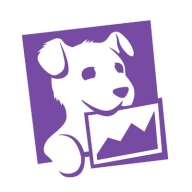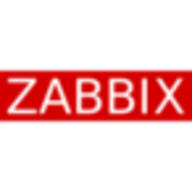


Find out what your peers are saying about Datadog, Dynatrace, Splunk and others in Application Performance Monitoring (APM) and Observability.
Amazon CloudWatch offers cost-saving advantages by being an inbuilt solution that requires no separate setup or maintenance for monitoring tasks.
In recent years, due to business expansion, knowledge levels among support engineers seem to vary.
It is so straightforward that I have never had to use the support.
Amazon CloudWatch's scalability is managed by AWS.
Zabbix is very scalable and lightweight.
I would rate its scalability ten out of ten.
I sometimes notice slowness when Amazon CloudWatch agents are installed on machines with less capacity, causing me to use other monitoring tools.
Zabbix is very scalable and lightweight.
Amazon CloudWatch charges extra for custom metrics, which is a significant disadvantage.
Maybe Amazon Web Services can improve by providing a library for CloudWatch with some useful features.
The documentation is adequate, but team members coming into a project could benefit from more guided, interactive tutorials, ideally leveraging real-world data.
There should be a clearer view of the expenses.
The only issue I can note is that it's Linux-based, and Linux documentation is not the best.
Amazon CloudWatch charges more for custom metrics as well as for changes in the timeline.
The setup cost for Datadog is more than $100.
It is literally free.
Amazon CloudWatch allows me to set up and view even historical logs, which is one of the features I find valuable.
I like its filtering capability and its ability to give the cyber engine insights.
Our architecture is written in several languages, and one area where Datadog particularly shines is in providing first-class support for a multitude of programming languages.
The technology itself is generally very useful.
If disk usage surpasses a threshold, say 70%, I receive alerts and can take proactive action.



Amazon CloudWatch is used for monitoring, tracking logs, and organizing metrics across AWS services. It detects anomalies, sets dynamic alarms, and automates actions to optimize cloud utilization, troubleshoot, and ensure service availability.
Organizations leverage Amazon CloudWatch for collecting and analyzing logs, triggering alerts, and profiling application performance. It's also employed for monitoring bandwidth, virtual machines, Lambda functions, and Kubernetes clusters. Valuable features include seamless integration with AWS, real-time data and alerts, detailed metrics, and a user-friendly interface. It provides robust monitoring capabilities for infrastructure and application performance, log aggregation, and analytics. Users appreciate its scalability, ease of setup, and affordability. Additional key aspects are the ability to create alarms, dashboards, and automated responses, along with detailed insights into system and application health. Room for improvement includes dashboards and UI enhancements for better visualization and customizability, log streaming speed, advanced machine learning and reporting capabilities, pricing, and integration with non-AWS services and databases. Users also seek more real-time monitoring and comprehensive application performance features, and simpler alerts and configuration processes.
What are the most important features?
What benefits and ROI can users expect?
Amazon CloudWatch is implemented across a range of industries, including technology, finance, healthcare, and retail. Technology firms use it to monitor application performance and traffic, while financial organizations leverage it for ensuring compliance and system reliability. Healthcare entities rely on it for maintaining service availability and monitoring data flow, and retail companies utilize it for tracking customer interactions and optimizing server usage.
Datadog is a comprehensive cloud monitoring platform designed to track performance, availability, and log aggregation for cloud resources like AWS, ECS, and Kubernetes. It offers robust tools for creating dashboards, observing user behavior, alerting, telemetry, security monitoring, and synthetic testing.
Datadog supports full observability across cloud providers and environments, enabling troubleshooting, error detection, and performance analysis to maintain system reliability. It offers detailed visualization of servers, integrates seamlessly with cloud providers like AWS, and provides powerful out-of-the-box dashboards and log analytics. Despite its strengths, users often note the need for better integration with other solutions and improved application-level insights. Common challenges include a complex pricing model, setup difficulties, and navigation issues. Users frequently mention the need for clearer documentation, faster loading times, enhanced error traceability, and better log management.
What are the key features of Datadog?
What benefits and ROI should users look for in reviews?
Datadog is implemented across different industries, from tech companies monitoring cloud applications to finance sectors ensuring transactional systems' performance. E-commerce platforms use Datadog to track and visualize user behavior and system health, while healthcare organizations utilize it for maintaining secure, compliant environments. Every implementation assists teams in customizing monitoring solutions specific to their industry's requirements.
Zabbix is an open-source monitoring software that provides real-time monitoring and alerting for servers, networks, applications, and services.
It offers a wide range of features including data collection, visualization, and reporting.
With its user-friendly interface and customizable dashboards, Zabbix helps organizations ensure the availability and performance of their IT infrastructure.